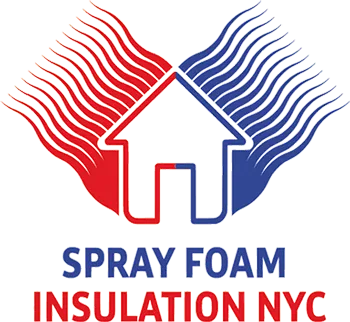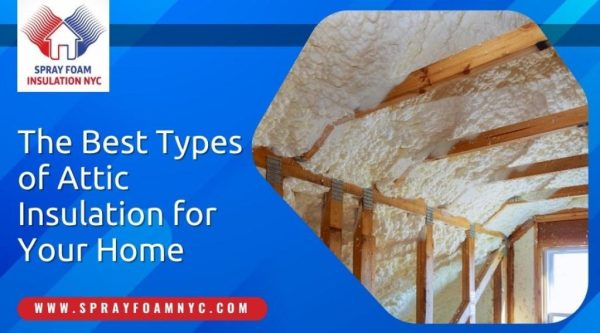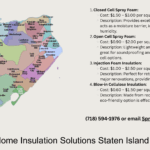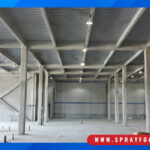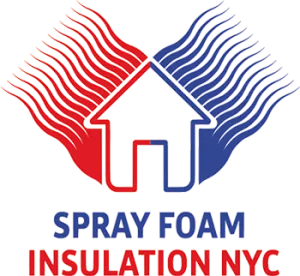If you are looking to reduce your energy bills, keep your home comfortable all year round, and make your home more environmentally friendly, then you should consider installing attic insulation. Attic insulation can help you achieve all of these goals and more. In this article, we will discuss the best types of attic insulation for your home, so you can make an informed decision.
Why is Attic Insulation Important?
Before we dive into the best types of attic insulation, it’s important to understand why attic insulation is important. Attic insulation plays a crucial role in keeping your home comfortable all year round. During the winter, attic insulation helps to trap warm air inside your home, preventing it from escaping through the roof. Similarly, during the summer, attic insulation helps to keep your home cool by preventing hot air from entering your home through the roof. In addition to keeping your home comfortable, attic insulation can also help you save money on your energy bills by reducing the amount of energy needed to heat or cool your home.
Types of Attic Insulation
Now that we know the importance of attic insulation, let’s take a look at the most common types in the market today.
- Fiberglass Insulation
Fiberglass insulation is one of the most common types of attic insulation, and for good reason. This kind of insulation is affordable, easy to install, and effective at reducing energy bills. Fiberglass insulation comes in batts or rolls and can be easily cut to fit the size of your attic. It’s important to wear protective gear when installing fiberglass insulation, as the tiny fibers can irritate your skin and lungs. - Cellulose Insulation
Cellulose insulation is another popular type of attic insulation. This type of insulation is made from recycled materials such as newspaper and cardboard, making it an environmentally friendly option. Cellulose insulation is effective at reducing energy bills and is resistant to mold and pests. Cellulose insulation is blown into your attic using a special machine, ensuring that every nook and cranny is filled. - Spray Foam Insulation
Spray foam insulation is a more expensive option, but it’s also one of the most effective types of attic insulation. It is made by mixing two chemicals together that create a foam-like substance. This foam is then sprayed into your attic, where it expands and hardens, creating an airtight seal. Spray foam insulation is resistant to moisture, pests, and mold, and can help you save money on your energy bills. - Radiant Barrier Insulation
Radiant barrier insulation is a type of reflective insulation that is installed on the underside of your roof. It reflects heat away from your home, helping to keep it cool during the summer months. Radiant barrier insulation is not designed to keep your home warm during the winter, but it can be used in conjunction with other types of insulation to provide year-round comfort.

How to Choose the Best Type of Attic Insulation for Your Home
When choosing the best type of attic insulation for your home, there are several factors to consider:
- Climate
The climate in your area will play a big role in determining which type of insulation is best for your attic. If you live in a cold climate, you’ll want to choose insulation that has a high R-value to keep heat from escaping. If you live in a hot climate, you’ll want to choose an insulation that is effective at blocking heat from entering the attic. - Budget
The cost of insulation can vary widely depending on the type of insulation you choose. Blown-in insulation is typically the most affordable option, while spray foam insulation is the most expensive. Consider your budget when choosing the type of insulation for your attic. - Ease of Installation
Some types of insulation are easier to install than others. If you’re planning to install the insulation yourself, consider choosing a type that is easy to work with and doesn’t require special equipment. - Environmental Impact
If you’re concerned about the environmental impact of your insulation, consider choosing a type that is made from recycled materials or is eco-friendly.
Conclusion
Choosing the best type of insulation for your attic can be a daunting task, but by considering factors such as climate, budget, ease of installation, and environmental impact, you can make an informed decision. Blown-in insulation, radiant barrier insulation, and spray foam insulation are all effective options for attic insulation, and each has its own unique benefits. Ultimately, the best type of insulation for your home will depend on your specific needs and preferences.
Call Spray Foam Insulation NYC in Queens, NY at (718) 594-1976 for professional Attic Insulation solutions.
FAQs:
How do I know what type of attic insulation is best for my home?
The best way to determine the best type of attic insulation for your home is to consider factors such as your budget, the climate you live in, and the type of HVAC system you have. Consulting with a professional insulation contractor can also help you make an informed decision.
Can I install attic insulation myself, or should I hire a professional?
While installing attic insulation may seem like a simple DIY project, it can be dangerous and time-consuming without the proper knowledge and equipment. It’s recommended to hire a professional insulation contractor to ensure the job is done safely and correctly.
Is it worth the cost to upgrade my attic insulation?
Upgrading your attic insulation can lead to significant energy savings and increased comfort in your home. While it may involve an initial investment, the long-term benefits can outweigh the cost.
How often should I replace my attic insulation?
Attic insulation typically has a lifespan of around 15-20 years. However, factors such as moisture, pests, and damage can impact its effectiveness and require earlier replacement. It’s important to periodically inspect your attic insulation and replace it as needed.
Can attic insulation help reduce outside noise in my home?
Yes, certain types of attic insulation can also be considered as soundproofing insulation. Some examples are blown-in cellulose or fiberglass can help reduce outside noise by creating a sound barrier between the outside and inside of your home.
